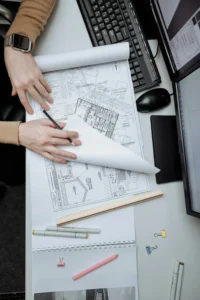
The Team’s Nest.
The manager’s key tool for the hybrid work model
The most recent pandemic and post-pandemic months have changed a great deal in the work of the manager. The new conditions have brought about the need of acquiring new skills and coping with challenges that never existed before. Nowadays, the leader of a hybrid team has a significant set of tools at hand, including the forgotten office. How to effectively use this in hybrid work and in particular, how to create it? Read more to find out.
Being a manager of hybrid work is a quite new competency in the market. In order to effectively guide one’s team, the leader needs to listen to employee needs and be a coach who collaborates with his/her people closely (more on the new role of a manager in the hybrid reality in my previous article). Due to new conditions, the manager also needs new tools for work that will support him/her in meeting everyday challenges.
One of the solutions is a well-designed and furnished office, which takes into account the different needs 0f rotating teams. How often this element is missed was shown to us during the recent year of working with our customers.
How to bring employees back to the office?
What should be done not to encounter empty offices? How to manage this process and not lose the employee? These are questions that were repeatedly asked during meetings with our Customers. We usually answered them by bringing up a counter-question – “why do you want the employees to return to the office?”.
The first reaction was surprise and then searching for a quick answer, which seemed obvious so far. In reality, it turned out that the more teams and directors there were, the more varied the answers were. Frequently, mining for everyday worries of managers led to an undisclosed need – “we want our employees to talk more with each other, be together, learn from each other, develop new areas in the company. Simply… to be with us”. And this is where we touch upon the essence of teamwork, namely social interactions.
The team nest and hybrid work in the office
When returning to the office following remote work – even temporarily or rotationally – it is recommended to have the team mentally rooted or nested by the manager, i.e. to create a place to build an atmosphere of safety, belonging and trust. This can be done virtually but will happen faster and deeper in physical reality, i.e. the office. Phases of team creation, new team roles and numerous interactions are much more visible then.
The team nest is a dedicated space in the office (assigned or booked temporarily) in which a hybrid team can meet and work together, depending on current needs.
When creating physical team nests, one should – in particular – include the actual employee needs and tasks entrusted to them – as there is no one size or model that fits all. A good solution is carrying out research amongst employees that will help create a new workplace strategy for the entire company or a particular department. Having in mind the effectiveness of this solution – both from the perspective of the company and the employee – when planning, one needs to take into account the current phase of the group’s development and the emotions accompanying the employees. An appropriate introduction and managing change are crucial for the success of the project.
Why is the team nest so important?
A common team nest plays a key role as it supports:
⚬ integration – both between employees and teams, which makes it more difficult for non-functional silos within the company to form,
⚬ strengthens the feeling of belonging – towards the company and its activities, the project group, the team,
⚬ making decisions together – the possibility of making common decisions, face-to-face, limits diluting responsibility and reduces the potential occurrence of the “free ride” phenomenon, when most of the work in a project is carried out by one person,
⚬ work-life balance – allows to separate the workspace from everyday life and rest, which in turn leads to better regeneration,
⚬ innovation – working together and informal conversations allow for spontaneous exchange of thoughts which lead to unexpected new solutions which the company values so much.
People are needed in the office so that they can prepare and become innovative. […] It may seem that remote workers will know more and that they will be capable of greater innovativeness. But it turns out that although they create innovative solutions, these are never used. And this is what innovation looks like. It is the unexpected interactions between people with whom one would normally be working or talking that make a significant difference.
John Sullivan, Professor of Management – San Francisco State University
Types of nests
A question arises, what should such a nest look like so that it fulfills the discussed functions? And is there one magic solution that can connect all the team members? As we move forward, let’s explore what types of physical nests a manager might use to support his work as part of a hybrid work model.
Designated desks
This is naturally the basic place where the entire team can meet from time to time and experience joint work and cooperation in the office. Such a solution supports newly forming teams in which frequent and spontaneous interactions during work help in the team-forming process. When taking into account optimum office use it is a good practice to create such places by applying the desk–sharing [1] concept with a booking system available for the manager.
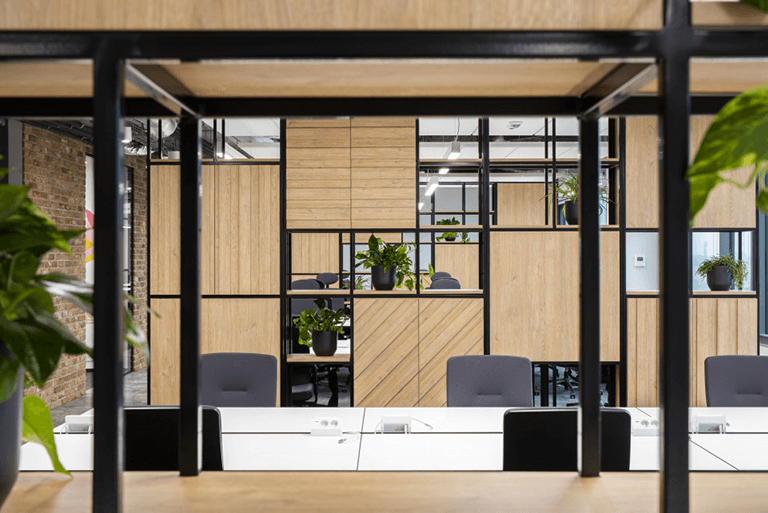
Brainly, Cracow, Poland; photo: Nowy Styl Group, source: propertydesign.pl
Rooms for project work
These suit teams that work agile perfectly. They are good for both individual work with the team as well as joint project work throughout the entire day. They allow for work in various configurations without the need of looking for additional space. Such bookable rooms allow the team to focus on tasks and to react on a current basis to occurring changes, ideas or needs as well as not to be interrupted or interrupt others.
This solution will work inter alia in the case of sales or developer teams that work on projects and need closed space.
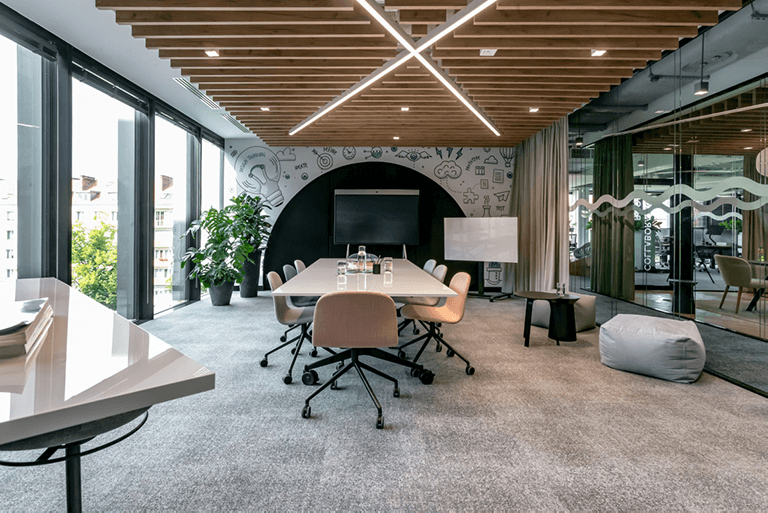
OLX, Poznań, Poland; project: The Design Group, photo: TDG press materials, source: propertydesign.pl
Places in the open space for teamwork
These are separated spaces for cooperation and meetings which constitute a common base for the team at a given moment. These can be co-shared spaces (bookable for a given time slot) as well as permanently prescribed to a team (individual team space with flexible arrangement possibility).
Such a solution will work well for teams that are dispersed in the office (working in a desk–sharing format), the work of which does not require confidentiality, but also for creative teams that need larger space for writing/drawing.
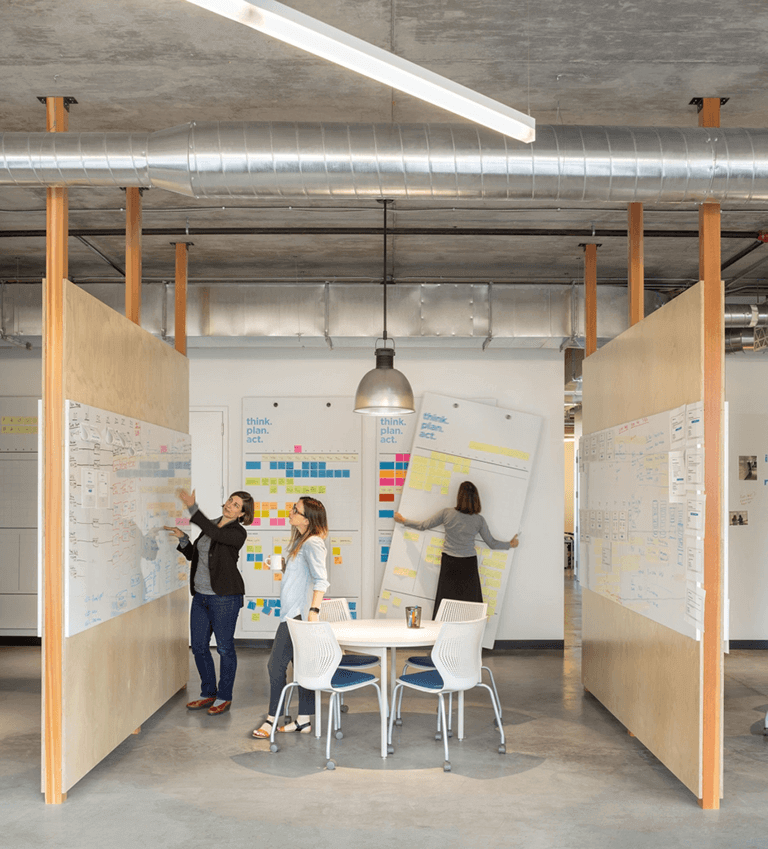
Zoom+Care, Portland, Oregon, United States, photo: Josh Partee, source: officesnapshots.com
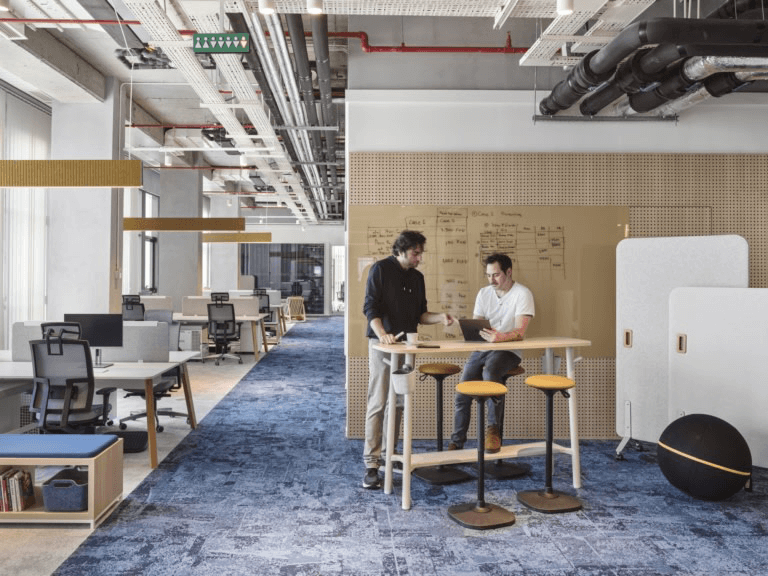
Architecht, Istanbul, Turkey, photo: İbrahim Özbunar, source: officesnapshots.com
Rooms for team work
These are varied spaces for meetings that are co-shared whereas on particular days serve one team. An example may be a room with soft seating solutions, which provides conditions to sit comfortably and in a different environment discuss team challenges, run workshops or brainstorming sessions on a given problem or issue. An adequately furnished and equipped room (with TV, flipchart/whiteboard, poufs) allows to effectively spend the entire day there.
A different type of nests falling within this category can be rooms equipped with amphitheatres which serve the purpose of summing up, retrospective, managerial expose or team members can mutually listen to each other. They are also an ideal place to practice public speaking!
Rooms for team work are solutions that will be useful for just about every single team as co-operation is the most frequent activity of the modern employee. The number and appropriate arrangement of such rooms should be defined through adequate analysis and with expert support.
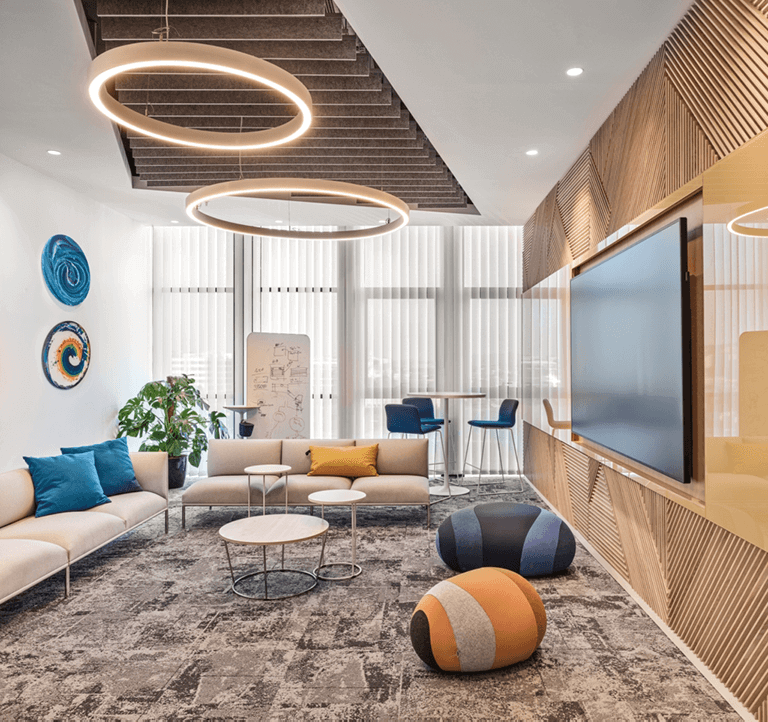
Architecht, Istanbul, Turkey, photo: İbrahim Özbunar, source: officesnapshots.com
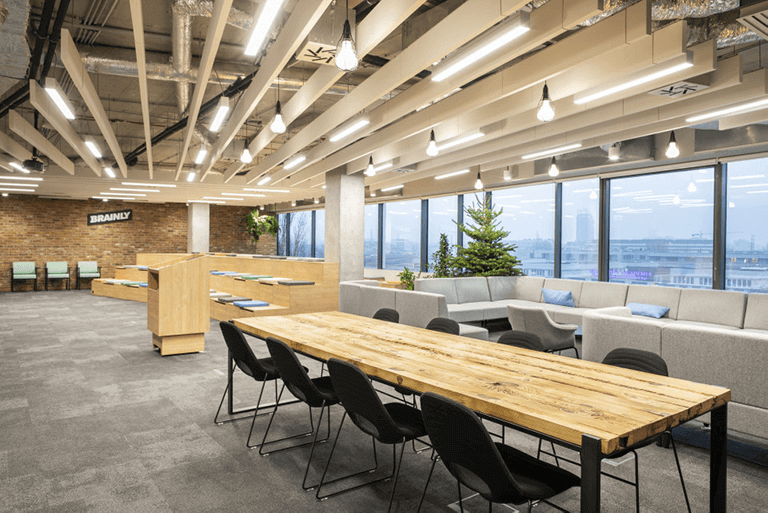
Brainly, Cracow, Poland; photo: Nowy Styl Group, source: propertydesign.pl
From the perspective of a hybrid team manager, nests are one of the key tools that one has in building, developing and maintaining the team. It is worth using them skillfully when planning activities in the hybrid world.
Obviously, the above typology is an attempt to capture a vast topic in an intuitive and simple way. Although there is no single “magic” solution, there are many options to take advantage of. If you need to find your own path in the hybrid work reality, we would be happy to help your Company or your Team.
[1] Desk-sharing – an idea based on sharing space and office equipment between employees of selected teams according to defined rules. This beneficially influences the use of space and allows for greater integration between employees.
Do you want to know more?
Contact the authors of the material!


